- contact@scarhandpainting.com


Welcome to Painting Star Wars: Shatterpoint Darth Maul tutorial. Here I will present to you a Step-by-step of a basic painting process for Darth Maul and a few extras to really make the miniature pop.

Before we start, some notes:
Similar to previous miniatures, I have removed parts of the miniature from the sprues, cleaned them from flash and built using Super Glue. You can visit Tutorial: Painting Star Wars Shatterpoint Clone Troopers article for a detailed tutorial on the topic.
TIP: Lightsabers in Star Wars: Shatterpoint are pretty delicate. To avoid bending or even breaking them, I suggest supporting their length with fingers while scrubbing off the flash line. This way the strength of the blade will be transferred onto the finger underneath the part, rather than influence the fragile part itself.
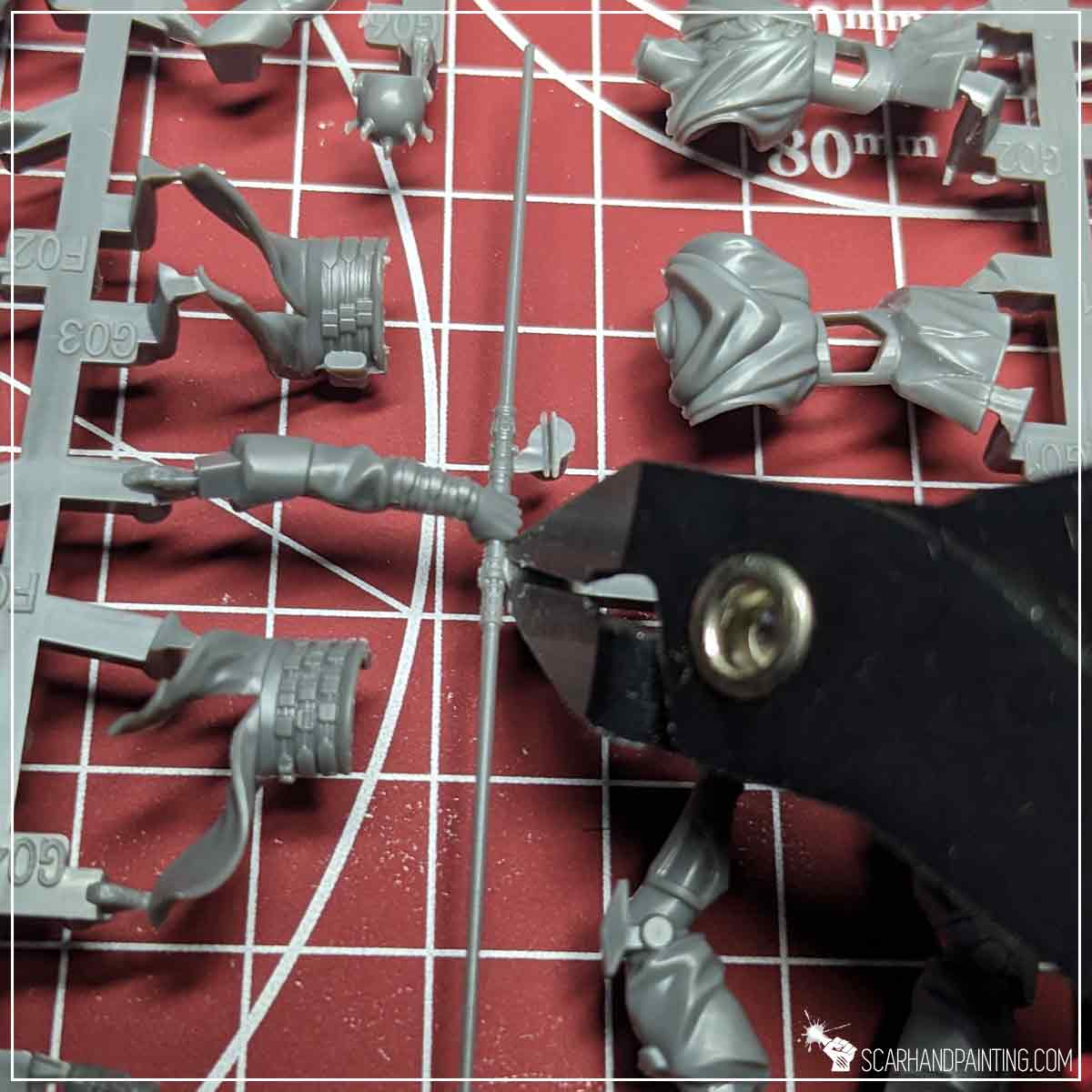

I mounted the miniature on a stick with a piece of Blu-Tack, then undercoated it with The Army Painter Black Matt Primer. This is the first time we will be using black primer in this series of articles and you will see the difference in both the methodology and the behavior of the paints used for this tutorial.

Darth Maul is a character and the miniature has a really menacing feel to it. With that in mind I have decided to go with a limited palette of colors and a technique that will bring out details across the entire miniature. I started by applying a layer of Necromancer Cloak across the entire miniature. I used the Wargamer: Regiment Brush for this and focused on applying the paint evenly. Due to how The Army Painter undercoats work (plastic-like, solid layer) and the pigmentation of Necromancer Cloak, the final effect might not look smooth, but I especially chose a technique that accounts for this kind of behavior.
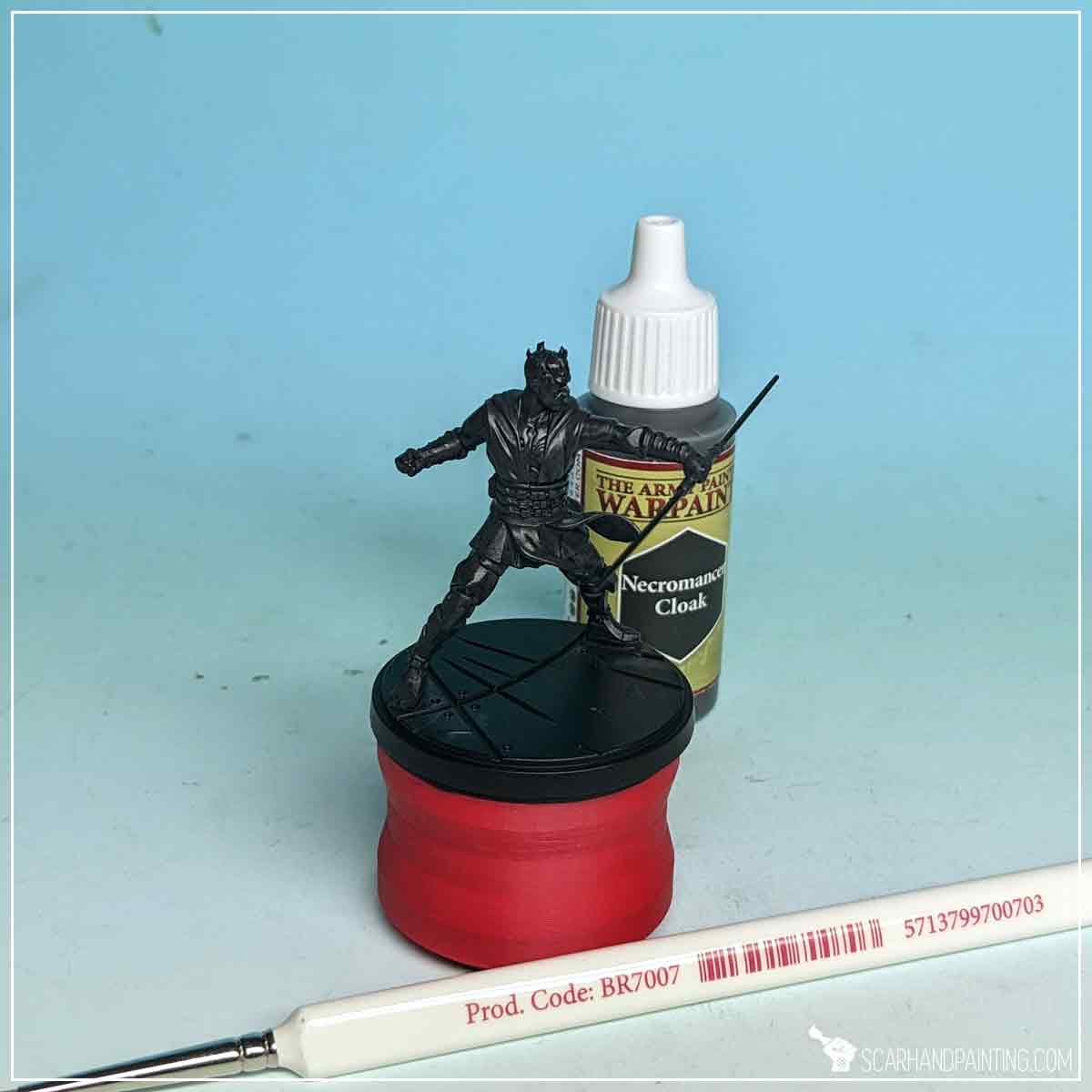
Next, using the same brush, I overbrushed Uniform Grey across the entire miniature.
TIP: Flatbrushing is done by putting the tip of a brush in paint, then brushing the excess paint off onto a piece of paper or other smooth surface material, then brushing the remainder of the paint onto the chosen surface, in one direction and perpendicular to any edges. This technique works best with brushes equipped with a long “head” or synthetic brushes with a long “belly” part. You can learn more about the technique HERE.


I then applied Mummy Robes with a mix of Flatbrush and regular highlights. This final step provided texture that will benefit the paint job later into the process.
TIP: I recommend painting two strong lines of Mummy Robes across the Lightsaber’s blades. This can be easily done with the edge of the tip of the brush and will create a nice, strong base for future vibrant red.





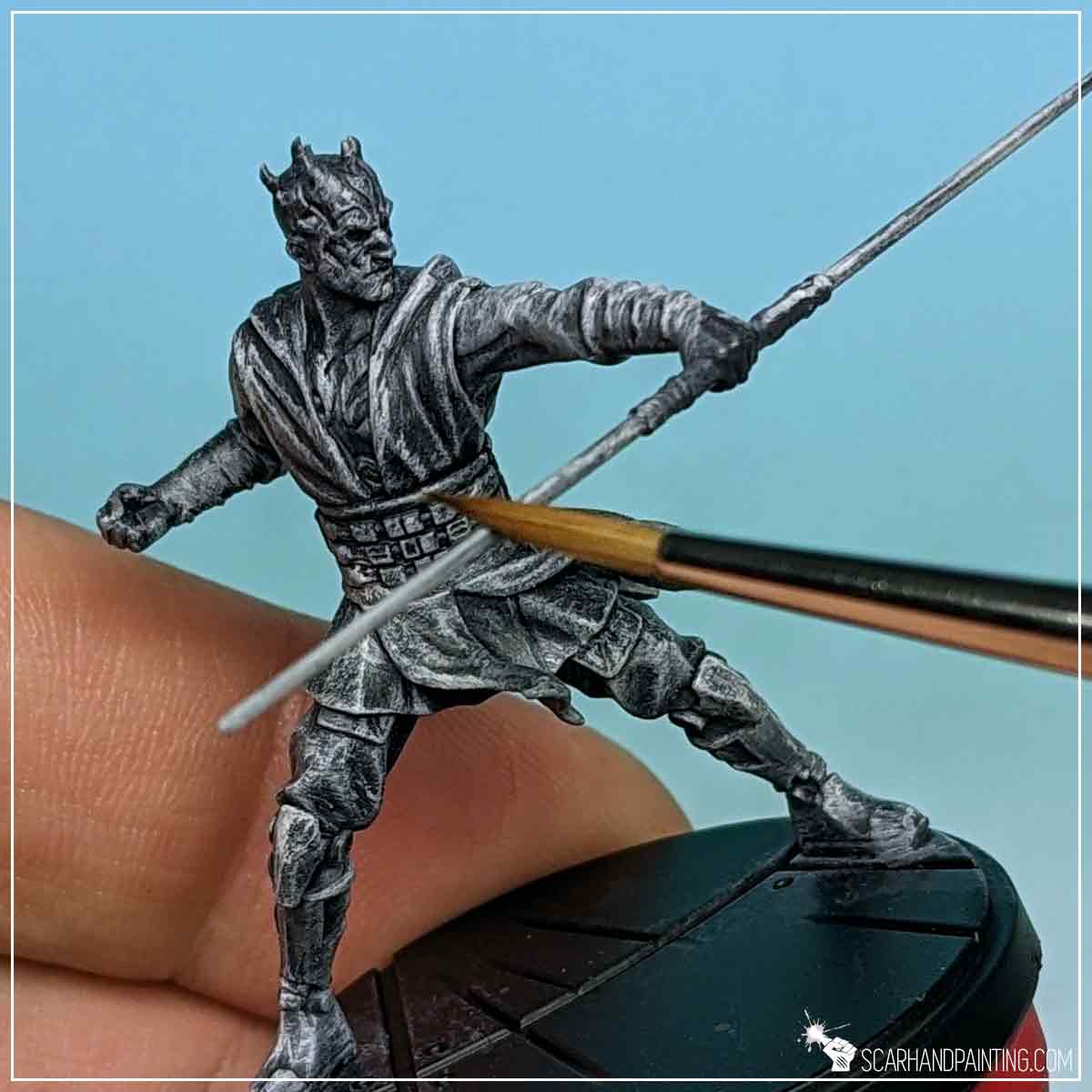
Finally I covered the entire miniature, except Lightsaber’s blades, with a strong layer of Dark Tone wash. Pigmentation from this paint darkened all recesses, but also toned down previous layers.


To better distinguish parts of clothing from the rest of the miniature, I applied a layer of slightly thinned Brownish Decay Speed Paint onto pants, sleeves and parts of the tunic. This is where the real beauty of the previous layers buildup really comes into view. Semi-translucent Speed Paint provides color, but leaves all the detail visible underneath.



Shifting to reds, I have applied a strong layer of Poppy Red Speed Paint onto the blades. Previous layer of Mummy Robes with slightly darker spots of Uniform Grey, provided a perfect base for this vibrant red color to settle on top of.


Next I have highlighted the front ‘edge’ of the blades with Dragon Red. I then switched to Wargamer: Insane Detail and Wargamer: The Psycho to apply Dragon Red on top of chest markings and in strongly underlined areas on the face of the miniature.
TIP: If you feel uncomfortable painting such details, be sure to check THIS ARTICLE, as it might help you improve your brush handling precision.


To add vibrancy I have applied small dots of Pure Red onto face markings, then highlighted both the chest markings and the front edge of the Lightsaber.



For horns I went with Skeleton Bone and applied it with a tip of the Wargamer: Character Brush.


I applied a single dot of Mummy Robes, followed by a touch of Barren Yellow (Air). Used Wargamer: The Psycho.
TIP: This part is a bit tricky and I sincerely recommend you to skip on painting eyes until you test it on other miniatures and feel comfortable painting such detail. On such a scale a pair of painted eyes is not necessary for a miniature to look good on the gaming board, whereas poorly painted eyes can ruin an otherwise solid paint job.

To really make all the colors pop and bring more details out I followed up with a general highlight. I used Wargamer: Character Brush and Stippled Desert Yellow (browns), Dry Rust (reds) and Mummy Robes (blacks) on top of edges of selected surfaces. I have also drawn some edge highlights on the sides of knee pads or well exposed folds of the robes.
TIP: Stippling is a technique of applying paint with multiple delicate touches of the brushe. Usually it is done with flat brushes, using their toe, but in this case I used Character Brushe’s spread out tip and applied paint using its edge, leaving small dots of paint, better presented in pictures below.




I started the base with a solid layer of Necromancer Cloak. I could have done this when painting the miniature itself, but it would have gotten messy so I left it for after the miniature was done.

I then applied a strong drybrush of Ash Grey all over the base and around the feet of the miniature.

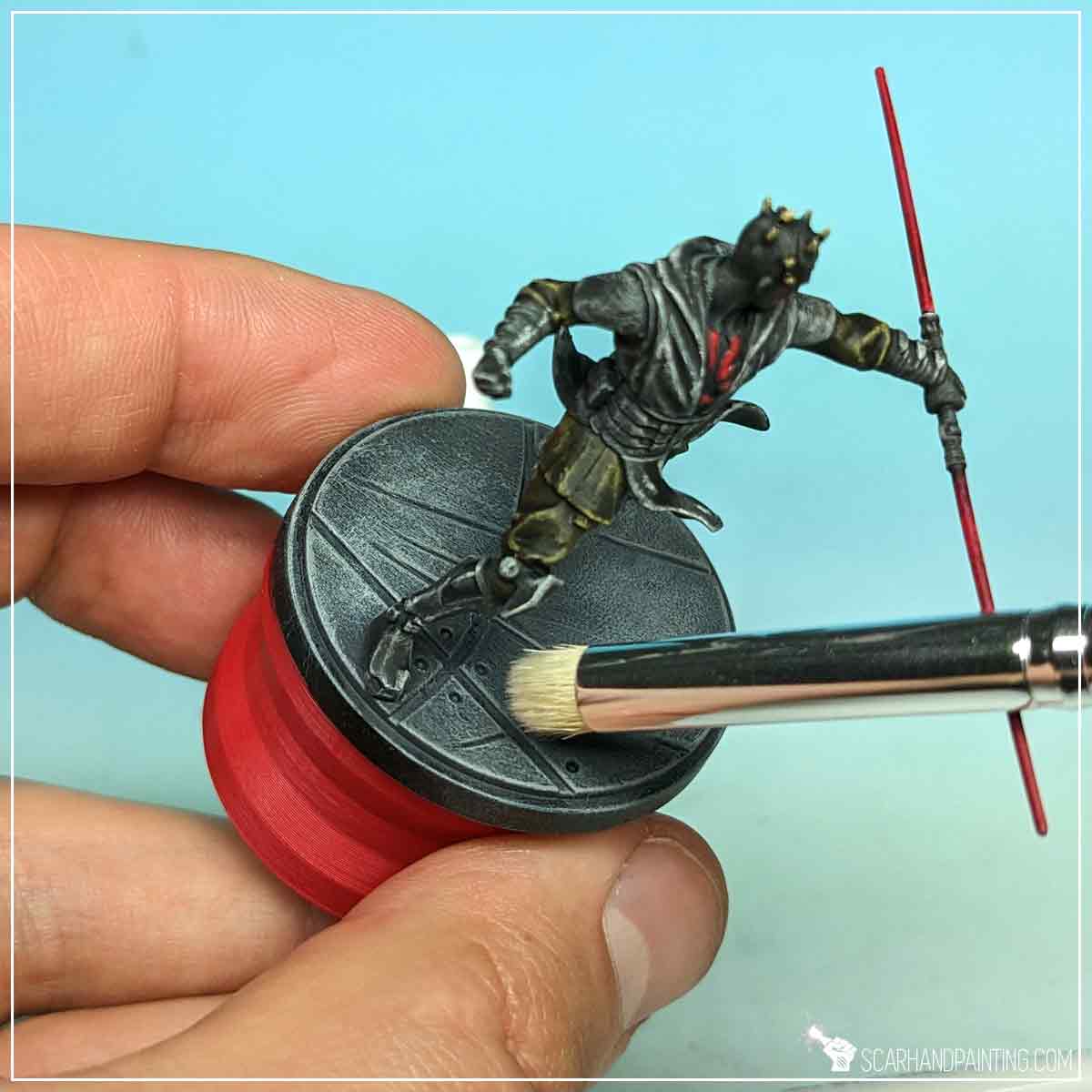
[Optional] Next I highlighted concrete plates edges with Mummy Robes and smeared thinned Mummy Robes with the tip of the brush in a few random spots.


[Optional] To add a bit of variety and treat Darth Maul with respect worthy of a character, I applied a glaze of Brownish Decay Speed Paint, thinned down with water, all over the base.


Finally I finished the base with smooth, black edges. One layer of Matt Black, applied with Wargamer: Regiment Brush.

Lastly I sealed the paint job with Anti Shine Matt Varnish.



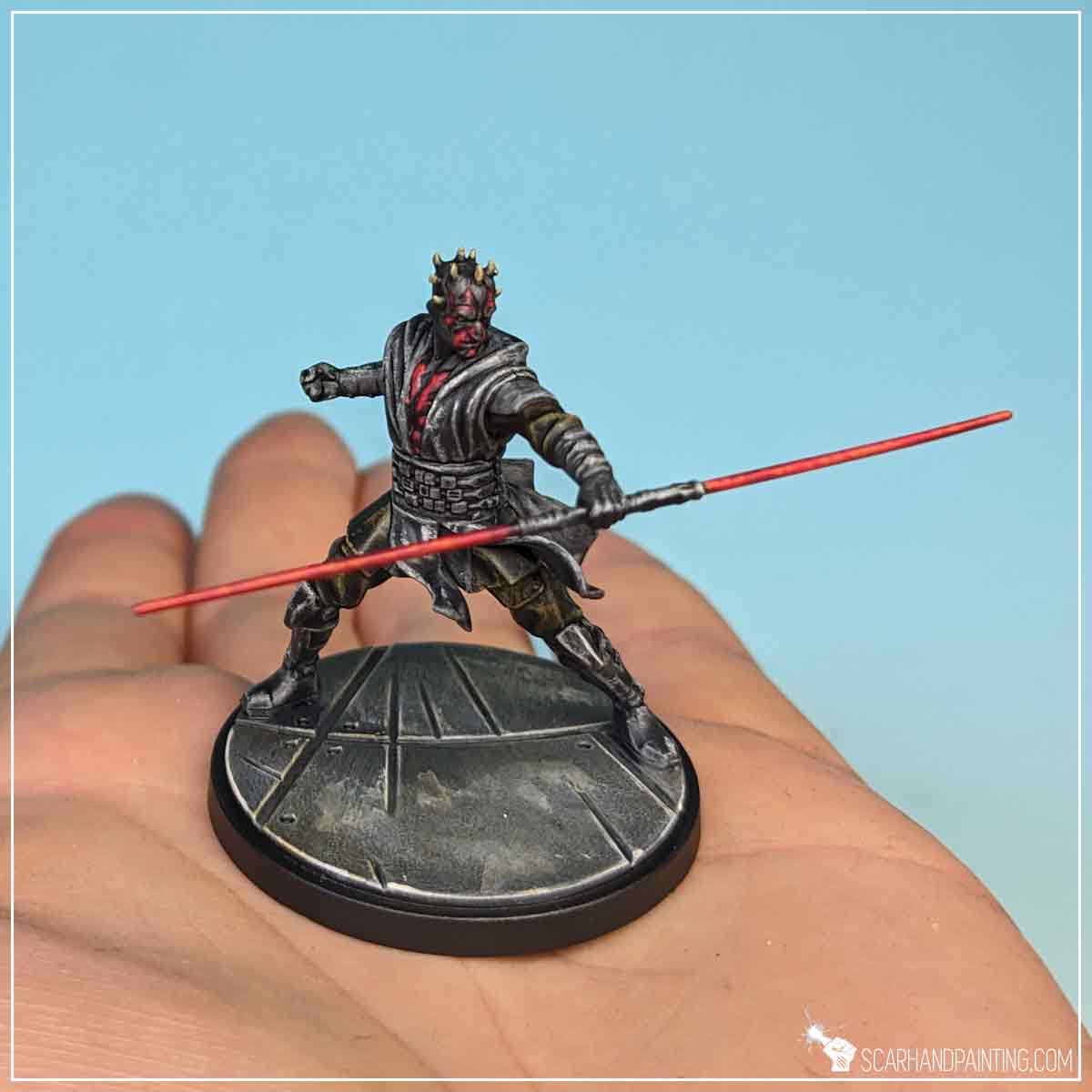


I hope you find this tutorial interesting. Be sure to let me know your thoughts in the comments below or via Facebook or Instagram. I would also appreciate it if you considered sharing this content with your friends, who might find it useful. Many thanks to Rebel.pl for sponsoring this content. Stay tuned for more Star Wars: Shatterpoint tutorials.